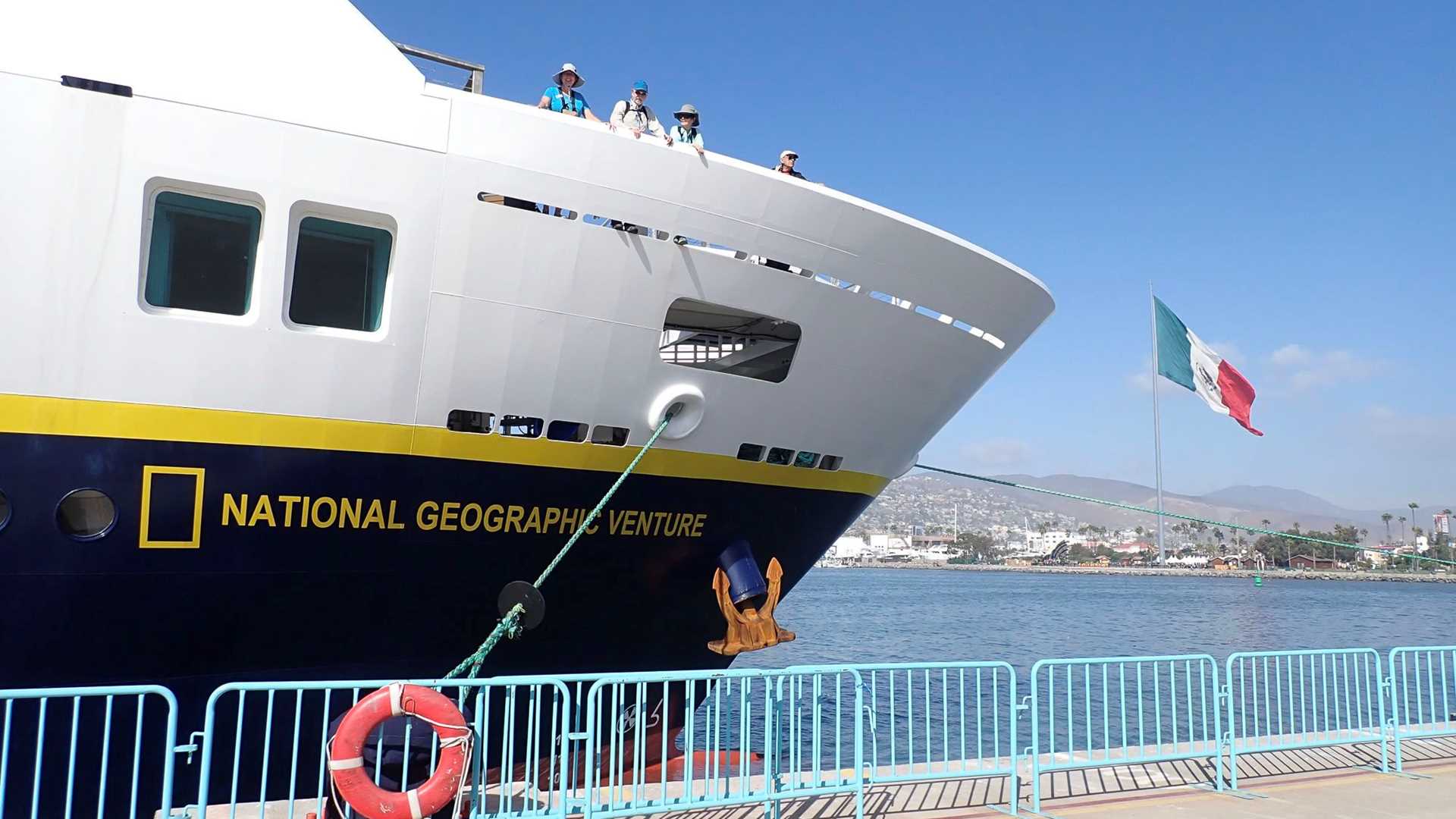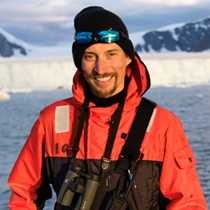Welcome to Mexico! And to Ensenada, Baja California Norte! We have left the United States and our first port of call is sure to be a memorable one. This morning we sailed slowly into the port of Ensenada, past Isla de Todos Santos, All Saints Island. Over half a million people call the city of Ensenada home, and there is a thriving culture and business center. After we pulled into the dock on the north side of the city, we boarded coaches and took the scenic hour drive up the Route de Vino to the northeast into the Valle de Guadalupe. This area has been called the Napa Valley of Mexico and produces more than eighty percent of the country’s wine. We found ourselves at perhaps the most well-known of all these wineries, Mount Xanic. We were treated to a walking-tasting tour of the facility. The beautiful grounds and the flavorful wines ushered us down to the nearby reservoir for lunch. The delicious Mexican feast was complete with mariachi music and a chocolatey dessert spread. Reluctantly we boarded the busses back to Ensenada, but our hesitation soon faded as we wandered through the city on our own or relaxed back on board. Low and behold, just off our port side, dozens of local fishing boats, adorned in holiday lights, paraded around in the harbor giving us the perfect show before dinner. A beautiful welcome to Mexico.
- Daily Expedition Reports
- 14 Dec 2019
Ensenada, Baja California , 12/14/2019, National Geographic Venture
- Aboard the National Geographic Venture
- Baja California
James Hyde, Undersea Specialist
Pacific Northwest born James Hyde grew up immersed in the Salish Sea, on Vashon Island with Seattle as his backdrop. A passionate traveler from a young age, James explored four continents before finishing his degree at Western Washington University's...
Read MoreShare Report
Channel Islands National Park to Baja California
VIEW ITINERARYRelated Reports
12/13/2022
Read
National Geographic Venture
Cabo Pulmo National Park
The sun rose in pink-colored hues over the tiny fishing village of Los Frailes, just as a squadron of local pangueros rounded the corner from Parque Nacional Cabo Pulmo to welcome us to another day of adventure aboard the National Geographic Venture . A breakfast of salsa roja chilaquiles kickstarted us into our first snorkel of the voyage—and what a place to do it! Cabo Pulmo National Park is a jewel of the global “Marine Protected Area” project, a stunning example of how an aquatic community can rebound and thrive if it is freed from extractive pressures and given the time it needs to heal. Once nearly-barren from decades of overexploitation, this 27-square-mile piece of piscine paradise had been set aside as a no-take marine reserve since 1995, thanks to the dedicated efforts and oversight of Cabo Pulmo’s ocean-minded community of residents and expats. The park—which also oversees the northern-most coral reefs of the Pacific Coast of North America and only reef-building coral community in Baja California—has seen its ecosystem rebound almost beyond comprehension, with a biomass surging over 400% in the past 30 years. We spent the morning snorkeling along these as-near-to-pristine reefs, encountering full “emergen-sea rooms” of yellowtail surgeonfishes, resplendent dent wrasses, parrotfishes, moorish idols, pufferfishes, damselfishes, bennies, hawkfishes, groupers and countless tropically influenced swimmers, all communing around corals, sea fans and sponges. Open-ocean passers-by of green, trevally and blue jacks swam by as pompano and cornetfishes chased closely behind. Though the water was chopped by the wind and relatively cool with the approaching winter, we explored throughout the morning until hands were thoroughly pruned and hot showers were extra-appreciated. Chicken tortas powered us into an afternoon of cruising, whale-watching, and learning from National Geographic Exporter John Francis about sustainable tourism. An evening of presentations about the park featuring dive footage from the day left our memory-bellies full for the tomorrow’s final full day of expedition fun. One could say we had experienced Cabo Pulmo-nary Resuscitation… Onward!
12/11/2022
Read
National Geographic Venture
Cabo San Lucas, Los Frailes
Early light painted the granite steeples of Land’s End in beautiful colors as Captain Andrew Cook nosed the National Geographic Venture e ver closer to these iconic rocks. What a beautiful and abrupt end to the Baja Peninsula, where the land plunges into the sea here at the meeting place of the mighty Pacific Ocean and the Gulf of California. Cameras clicked and whirred as we all enjoyed the sight and even the sounds of Finnis Tierra . Traveling further to the east and eventually the north we were in the breeding and calving grounds of the Great New Englander, as the scientific name of the humpback whale translates. Humpback whales have been traveling south with us as we migrated from the cooler California waters into the tropics here at the southern end of the peninsula. In the distance we see tail-lobbing, pectoral fin slapping, and even breaching as we make our way along this coastline. In the afternoon we find ourselves in a protected anchorage called Los Frailes (the Friars). Some of us hike to an estuary to look for birdlife, while others walk the beach in search of treasures. The beach walkers encountered several turtle nests that had been recently abandoned, leaving behind the dried-up eggs that the turtle hatchlings erupted from the nest in. A cold and tasty beverage was there upon our return, along with a lovely campfire, all provided by our amazing hotel department!







